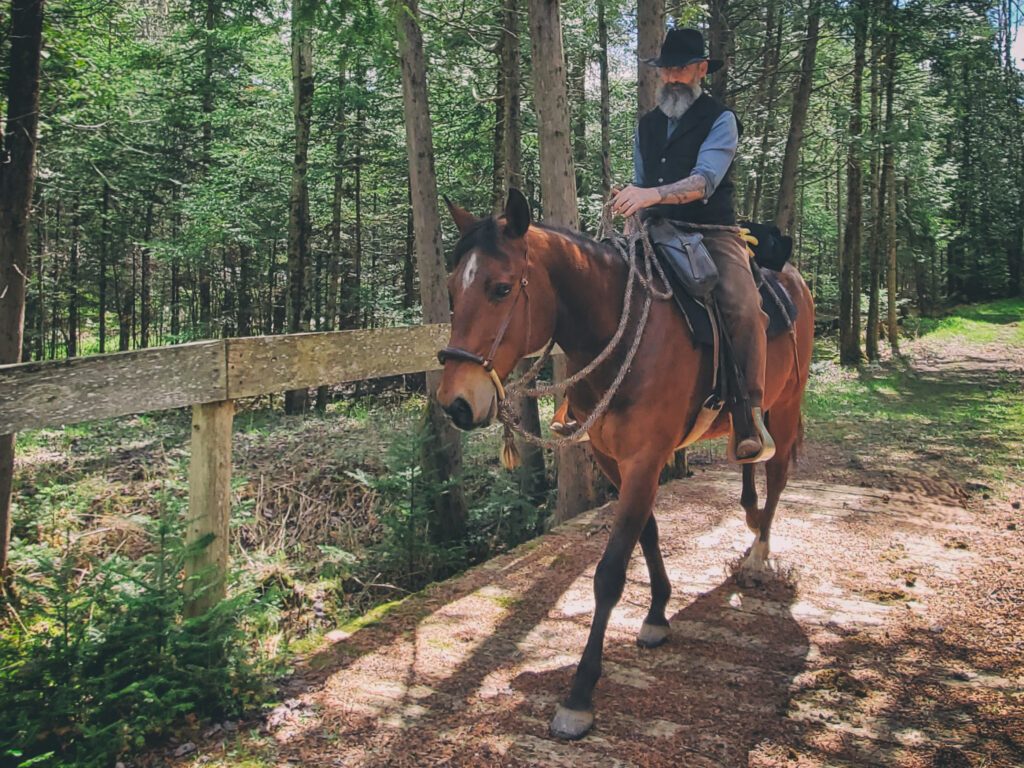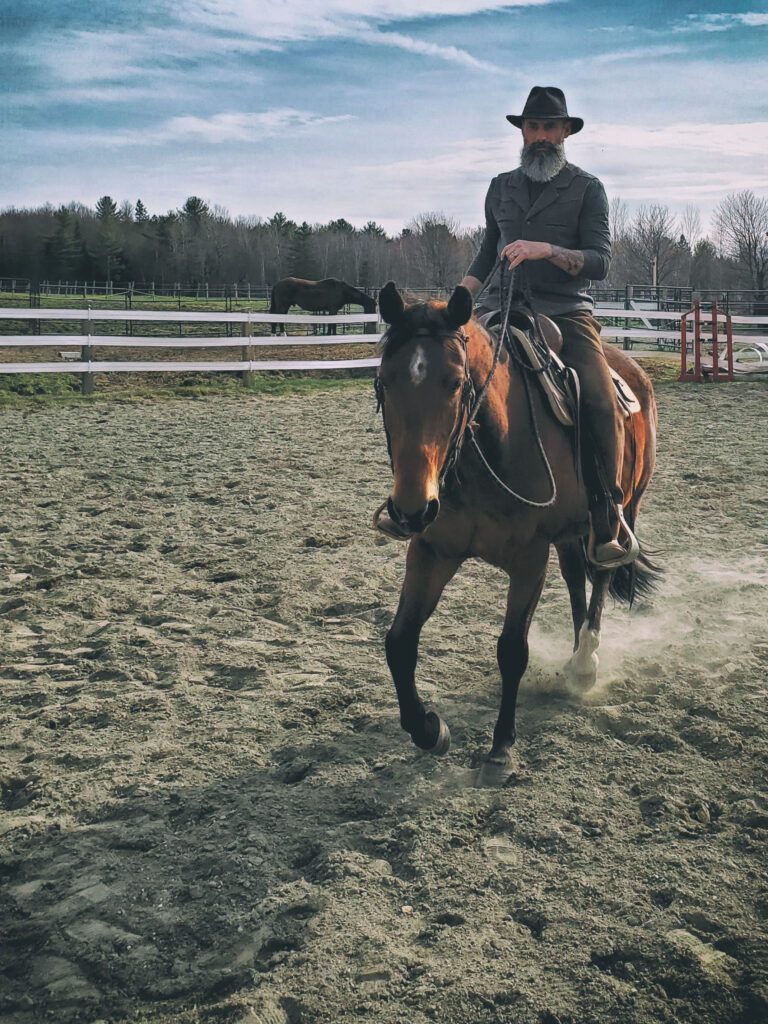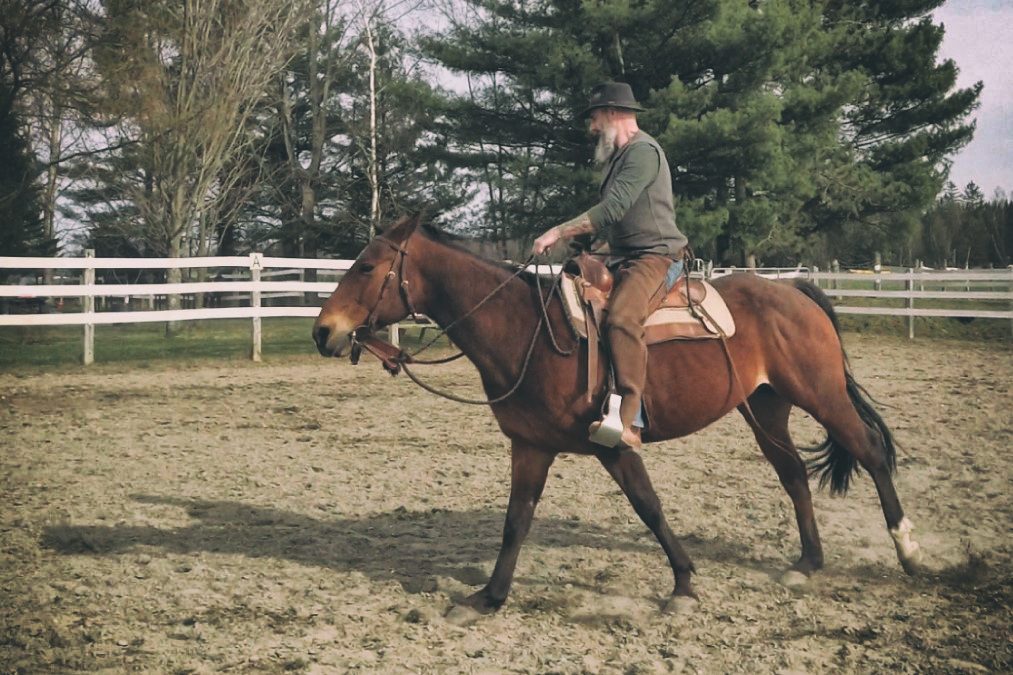This exercise is designed to teach the horse how to respond to our cues to walk, jog and canter smoothly. We will look for nice transitions, regular gaits and straight moves.
Table of Contents
Walk, trot and canter are very natural gaits for a horse. So, the objective of this page is not to teach the moves, but to teach when, at what speed, and how we want the horse to perform the gaits. I will deal only with basic things here. Rhythm, Soft Feel, leads, simple, and flying changes will be the object of further exercises.
Position
A quick reminder of the positions:
- Position 3 – Deep on your pockets. This is used to stop the horse, to remain still.
- Position 2 – Upright in the saddle, above your seatbones. This is the riding position, and used as a cue to walk the horse.
- Position 1 – Slightly bent forward. This is used to gallop or to jump for instance.
Process | Walk
As you probably guessed already, we will teach our horses to start to walk as soon as we switch from position 3 to position 2. That is the soft deal. So, every time you want to walk your horse, change the position of your pelvis to give life to your horse. At the beginning of the learning process, you will probably have to offer a second deal to obtain the good response.
Most horses will require your bumping the flanks until they move, one step forward is good enough to release pressure and pet your horse. Bumping should be firm and in rhythm (one bump per second), never hard nor out of tempo. Repeat the process _ switch position, bumping _ until your horse starts to walk as soon as you bump once, then as soon as you sit in position 2.
Tip:
A good walk is a live and sustained walk. Once you horse is walking, it is NECESSARY to control your legs and heels and spurs! If you want your legs to mean something to your horse, they should remain hanging still along his flanks when he walks. As soon as he stops, your legs should get alive, and squeeze the flanks until he walks again… Pretty soon, your horse will keep walking all the time unless you ask anything else.

Process | Trot
Make sure you can seat-stop your horse, or at least that you can perfectly use the one-rein stop, before you start to trot or canter. There is no good reason to speed your horse up if you can not control him on a walk. Now that your horse carries the walk without your legs squeezing all the time, you can teach him the cue to trot. Remain in position 2 and put a light but steady pressure with your calves until he starts to trot. Be right on time: as soon as he trots, release pressure and pet him.
Process | Canter
More than other gaits, canter demands a lot more efforts from your horse. Psychologically, lope is barely synonym of a peaceful behaviour, quite the contrary. Physically, carrying extra weight at a faster gait is more challenging, balance is more difficult to keep. In order to facilitate the process, I advise to ask for the canter on a straight line, lead is not important at the beginning.
The cue is exactly the same as for the trot. The difference is a slight change of your position: switching from position 2 to position 1, the squeezing of your legs will call the canter. As soon as the horse is loping, get back to position 2, and release pressure with your legs. As for the trot, legs remain still during the lope and will come to life again only if your horse slows down to a trot without your consent.

Q&A | Walk
What if my horse does not move when I squeeze my legs?
Some disrespectful horses, or horses that have been trained to become dull to the legs by nagging riders, will not react to your squeezing. I personally do not like spurs as I have noticed that riders do not use them correctly most of the time. My approach consists in establishing clear cues from the ground by Lunging the horse at all three gaits. Then, I will ride the horse with the flag, holding it high:
- Switch from position 3 to position 2.
- Squeeze your legs (because you still want the horse to understand their meaning).
- Flag his hind end until he moves away, that will end in a nervous trot most of the time.
After a few attempts, your horse will relate your squeezing legs to the flag coming right after, so he will start to walk before you can wave the flag. Be consistent and pretty soon your horse will walk as soon as he feels your changing of position in the saddle.
Q&A | Trot
What if my horse does not trot when I squeeze my legs around?
As for the walk, the dullest horses may not react to your squeezing, so keep that sentence in mind: as soft as possible, but as firm as necessary. Start to bump your horse in the flanks until he starts to trot _ you can use the flag if you have it in hand too. Make sure you release all pressure, and pet your horse as soon as he trots, he will understand your cue faster than you think…
Q&A | Canter
What if my horse turns during the lope?
You should let some time to your horse to get used to that gait. As I mentioned already, carrying a rider is a challenge at the beginning _ try to run with a 15-kilo kid on your back if you need to be convinced. The more you practise this change of gaits, the better your horse will handle the weight, it will then be easier to stay on straight lines, to turn right or left, and so on.
What if my horse tries to buck when I ask for the canter?
Most of the time, that simply means that your horse does not respect you. Make sure you have well practised the basics, Lunging your horse at the lope to the right, then to the left. From the saddle, every time your horse does something silly to challenge you on the lope, untrack his hindquarters on a complete circle, then go back to the trot, and ask again for the canter. Pretty soon, your horse will rather lope with you than try to challenge you.
